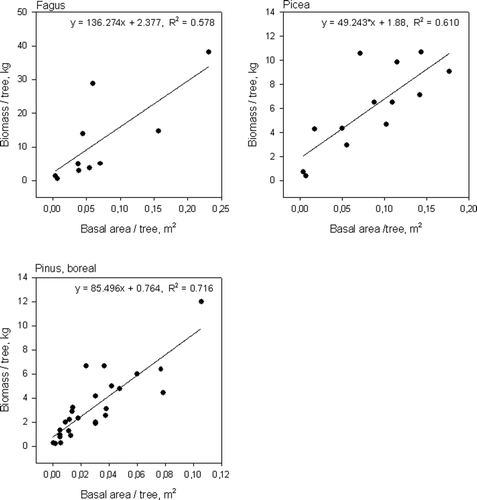Figures & data
Figure 1. The location of reviewed stands. The stands located in Finland, Estonia, Norway and Sweden were classified in the boreal zone.

Table I. Sources of data
Table II. Descriptive statistics for the beech, spruce and pine stands in the temperate zone
Table III. Descriptive statistics for the spruce and pine stands in the boreal zone
Table IV. The Pearson correlation coefficients between the fine root biomass (g m2) and the climatic, site and stand factors.a
Figure 2. Mean fine root biomass in different site fertility classes for beech, spruce and pine stands. Error bars indicate standard deviations, and in each species group letters show the fertility classes which differ significantly from each other according to the Tukey's test (p < 0.05).
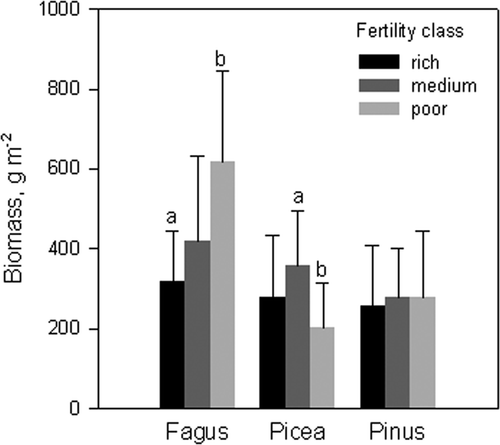
Figure 3. Relationship between C/N ratio of organic soil layer and fine root biomass for Scots pine stands.
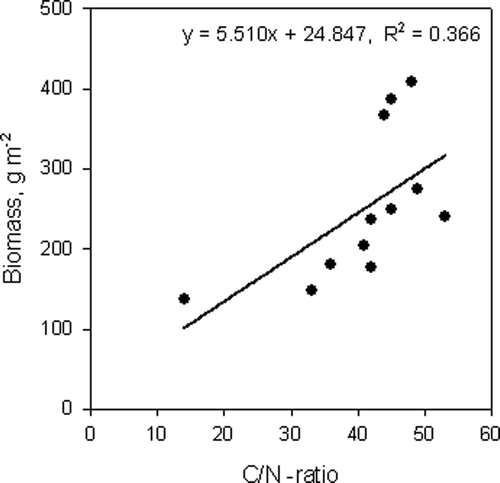
Figure 4. Relationship between stand age and fine root biomass in the temperate zone for beech and Scots pine stands.

Figure 5. Relationship between stand basal area and fine root biomass for spruce in the temperate and boreal zones.
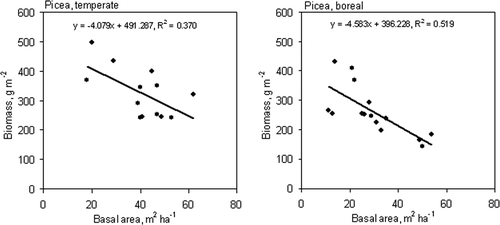
Figure 6. Relationship between stand age and fine root biomass per tree for beech and spruce in the temperate zone and for Scots pine in the temperate and the boreal zone.
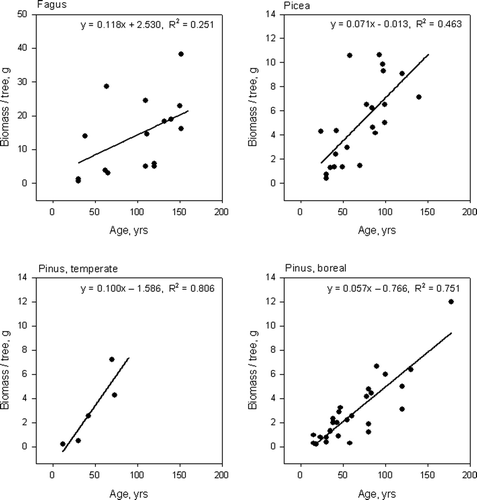
Figure 7. Relationship between stand basal area per tree and fine root biomass per tree for beech and spruce in the temperate zone and for Scots pine in the boreal zone.
